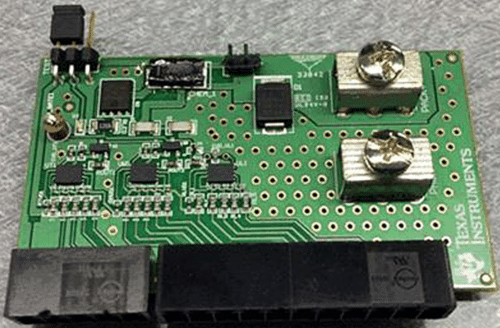The design ensures voltage monitoring, supports integration with various monitors, and provides protection through fuse-blowing mechanisms for safety.

Secondary-level protectors are now required for 48V-60V battery systems in industrial applications. The TIDA-00108 reference design from Texas Instruments (TI) offers a robust stacked architecture that ensures high-accuracy voltage detection for 10s-15s series rechargeable cells. Within the bq7718xy family, each cell is monitored independently, featuring an embedded delay timer to prevent false tripping of inline fuses. The design applies to various industries, including power tools, storage battery protection, and electronic vehicle (EV) bikes.
The solution operates independently of existing monitoring Analog Front-End (AFE) and cell-balancing systems, offering seamless integration with 5-, 10-, and 15-series (S) monitors and protectors. It provides precise electronic control of an accurate self-controlled inline current fuse. A key feature is the one-time fuse blow mechanism, which permanently disables the circuit, isolating the pack and rendering it inoperable for enhanced safety and protection.
The secondary stack system reference design consists of three key functional blocks. First, the cell input filters and protection network are defined according to the bq7718 device specifications. These filters ensure proper voltage and current management at the input stage. Second, the design incorporates three bq771xx devices arranged in a stacked 3-S configuration, combining individual output signals in a logic OR using an analogue scheme. This serial arrangement supports voltage translation from ground up to 60V. Lastly, the inline fuse blowing mechanism is electronically controlled by an NMOS FET connected to a self-protecting fuse, ensuring safe disconnection when necessary.
The cell banks are emulated in laboratory testing using a cell bank simulator. The simulator routes cell voltages through a low-pass filter network designed per the device specifications, which also limits the differential current into the bq7718 device. The bq7718 series independently monitors each cell, with an embedded delay timer that prevents premature triggering.
The gate voltage of the NMOS FET is calculated to range between 3V and 10V. When activated, the FET pulls the fuse to blow open through the heater resistance of the self-controlled, state-of-the-art fuse, ensuring reliable protection. This unit is programmed to apply loads ranging from 3A to 30A, enabling thorough PCB performance testing under varying conditions.
Key circuit parameters, including the normal operating current during both charging and discharging, the maximum fault voltage, and the secondary protection circuit’s response time to an overvoltage condition, guide the selection of the device specification. Based on the system’s overvoltage protection (OVP) threshold, output delay timer, and output drive requirements, the secondary protection device can be chosen for the design.
TI has tested this reference design. It comes with a bill of materials (BOM), schematics, assembly drawing, printed circuit board (PCB) layout, and more. The company’s website has additional data about the reference design. To read more about this reference design, click here.













